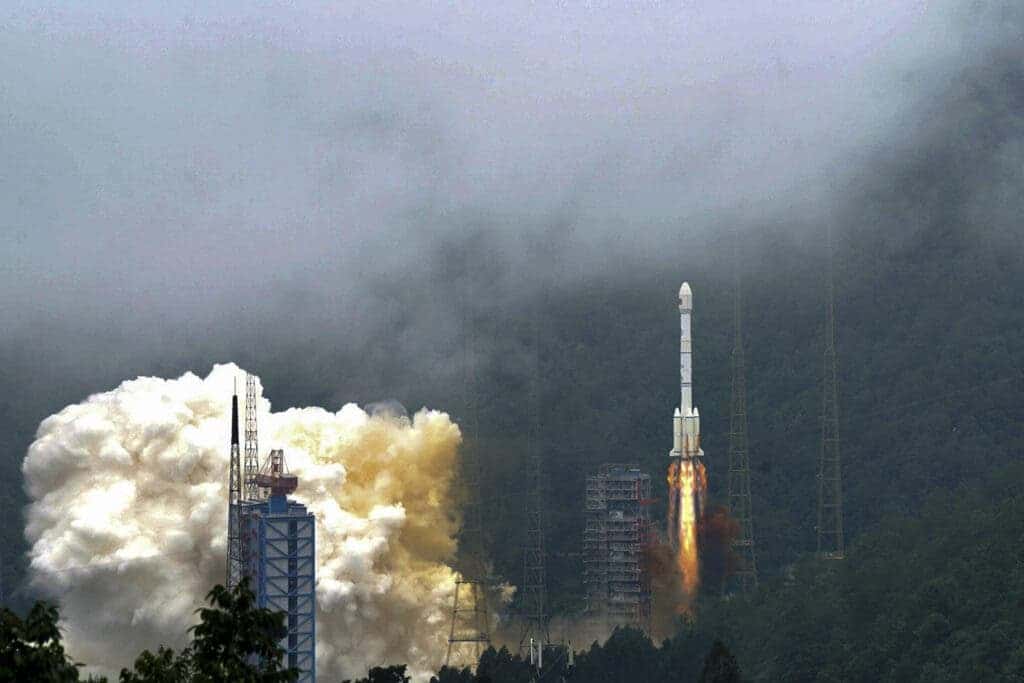China has launched the final satellite of the Beidou constellation, its own GPS-like system.

Image credits Xue Chen / Xinhua via AP.
On Tuesday, a Long March-3 rocket was being readied for launch in the mountains of southwestern China. Shortly before 10 a.m., its launch was broadcast live, and in about half an hour, the new satellite was deploying its solar panels, safely in orbit.
With it, China’s third iteration of the Beidou Navigation Satellite System was complete. Yang Changfeng, the system’s lead designer, said for a state broadcaster that Beidou’s completion shows China is “becoming a true space power”.
Domestic GPS
The USA, Europe, and Russia all have their own satellite constellations to handle communications and navigation — the GPS, Galileo, and GLONASS, respectively. China has so far had two iterations of its Beidou network, with this being the third. The 55-satellite strong network is meant to provide global coverage for communications, timing, location, and navigation.
Its initial launch, scheduled for last week, was postponed due to unspecified technical problems.
The now-complete system, BDS-3, consists of 30 satellites. It consists mostly of medium Earth orbit satellites, with six geosynchronous orbit satellites (such as the one launched today).
Work on BDS-3 first started in 2018 and provided service for countries partaking in China’s “Belt and Road” infrastructure initiative. It supports “short message communication, satellite-based augmentation, international search, and rescue, as well as precise point positioning,” according to state-run news agency Xinhua. The short messaging system transmits up to 1,200 Chinese characters long and images, it adds.
China is only the third country to ever launch an independent space mission. Since then, it’s also sent rovers to the moon and constructed an experimental space station. Its plans for the future include a crewed, permanent space station, and possibly even sending a rover to Mars next month.






